Menu: The Modern History Portfolio Products
Introduction to the Modern History Portfolio
Product Descriptions
Bibliography – Recommended Sources
Method and Philosophy of Approach
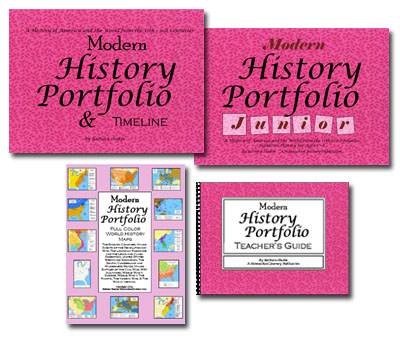
INTRODUCTION:
The History Portfolio volumes offer a full year, classical, history curriculum, following the four year cycle of Ancient, Medieval, Renaissance, and Modern history. The program combines the creative, hands-on, qualities of a notebooking approach with an inquiry-based approach characterized by research and writing. Each Portfolio contains specially formatted cardstock notebooking pages, and is bound in an attractive, landscape oriented, 3-ring binder.
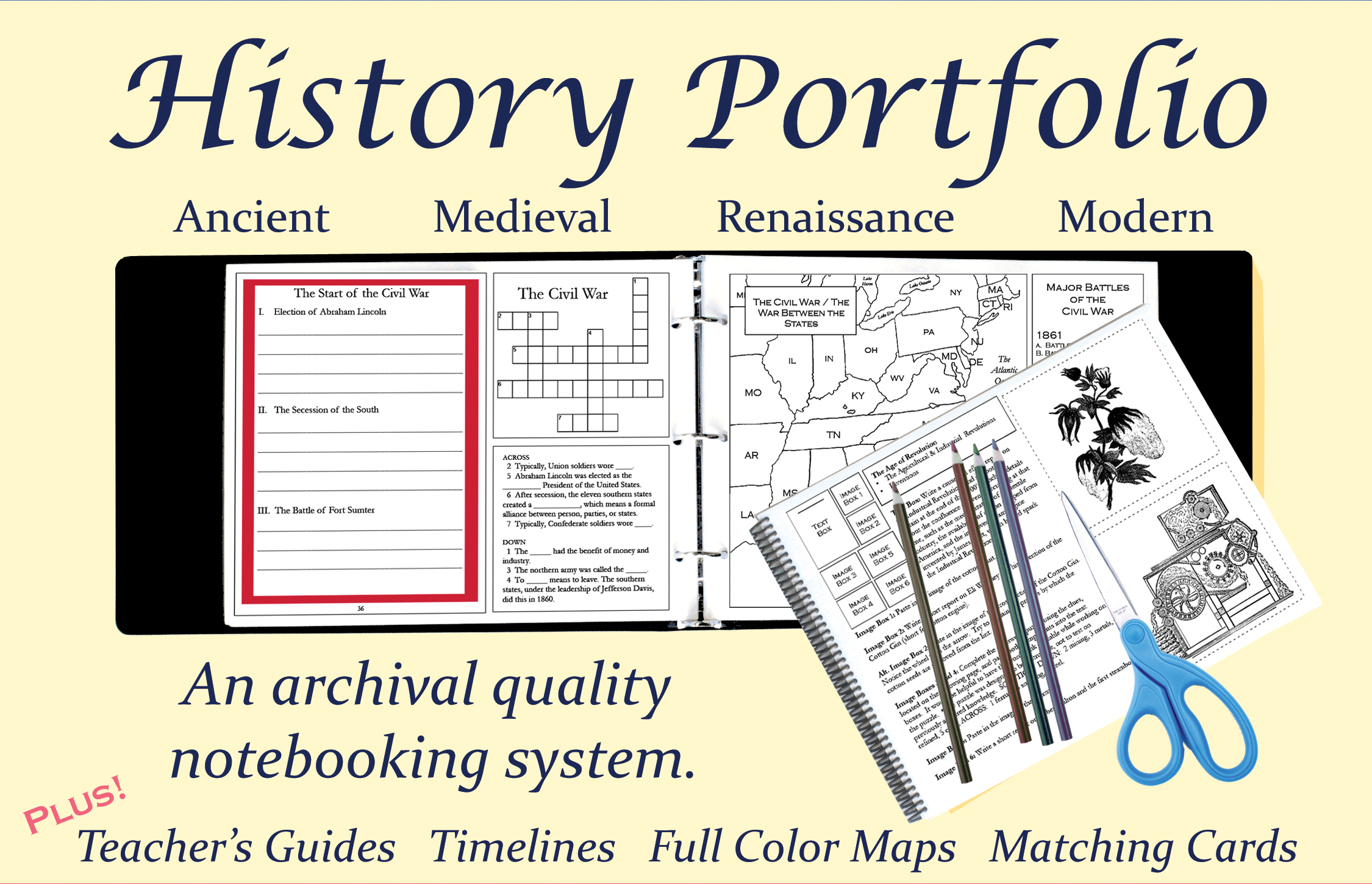
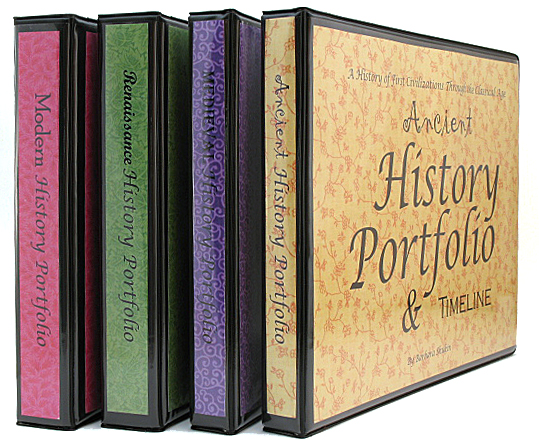
Working in the Modern History Portfolio Classic or Junior requires the student to be the journalist and to “Tell the Story.” The Portfolio’s table of contents and notebooking pages facilitate this process by providing a clear and detailed outline with topics and essential sub-topics. Notebooking activities are multi-level, but always involve age appropriate research, reading, writing, and illustrating. This process has been designed to provide the requisite skills for self-directed study.
PRODUCT DESCRIPTIONS:
Modern History Portfolio Classic and Junior A History of Early Christianity, Byzantium, and Medieval Europe
The Modern History Portfolio Classic is for ages 9 and up. The Modern History Portfolio Junior is for ages 5 — 10. All Portfolio notebooking pages are formatted with a unique system of “image boxes” and “text boxes,” providing an overall pleasing composition especially as written work and images are added. Chapters in both the Classic and Junior volumes are: . Useful black-line maps are provided within each chapter. The Modern History Portfolio Classic also includes a unique consumable timeline. Essential companion products for the Classic Portfolio are the Modern History Portfolio Teacher’s Guide and Modern Full Color Maps. The companion product for the Junior is the Modern Full Color Maps.
Modern History Portfolio Classic:
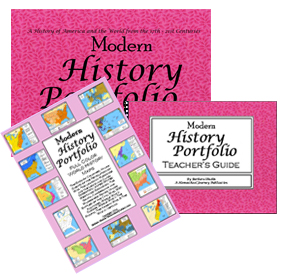
Modern Bundle
Students using the Modern History Portfolio Classic will be steadily guided throughout the process of completing a Portfolio. First, the table of contents and the separate, consumable, Teacher’s Guide will provide a detailed spine. Following the spine, the student then proceeds with age appropriate research and pre-writing activities, sorting information and writing reports, illustrating reports with relevant images, and adding the reports and images to the notebooking pages of the Portfolio. For each time period, Ancient, Medieval, Renaissance, and Modern, the student creates a unique, keepsake-quality, record of their journey through history, while developing the essential research and writing skills required for independent, self-directed learning.
The Modern History Portfolio Teacher’s Guide is designed to be used in conjunction with the History Portfolio. While the Portfolio suggests topics for each page of the Portfolio, the Teacher’s Guide focuses the direction of research by suggesting essential, not-to-miss, topics and sub-topics for each and every Text Box and Image Box on each page. The Teacher’s Guide suggests vocabulary words, names of important leaders, artists, and scientists, and indicates minor associated events, inventions, architectural monuments, etc., for supplementary research. Because words are not always enough to tell the complete story, the Teacher’s Guide provides numerous, black-line, cut-and-paste illustrations and diagrams. Bonus puzzles and activities for reinforcement and review are also included.
The Modern History Portfolio Full Color World History Maps provide reference maps for every black-line map in the Portfolio. Only one set of Ancient maps is needed for each family.
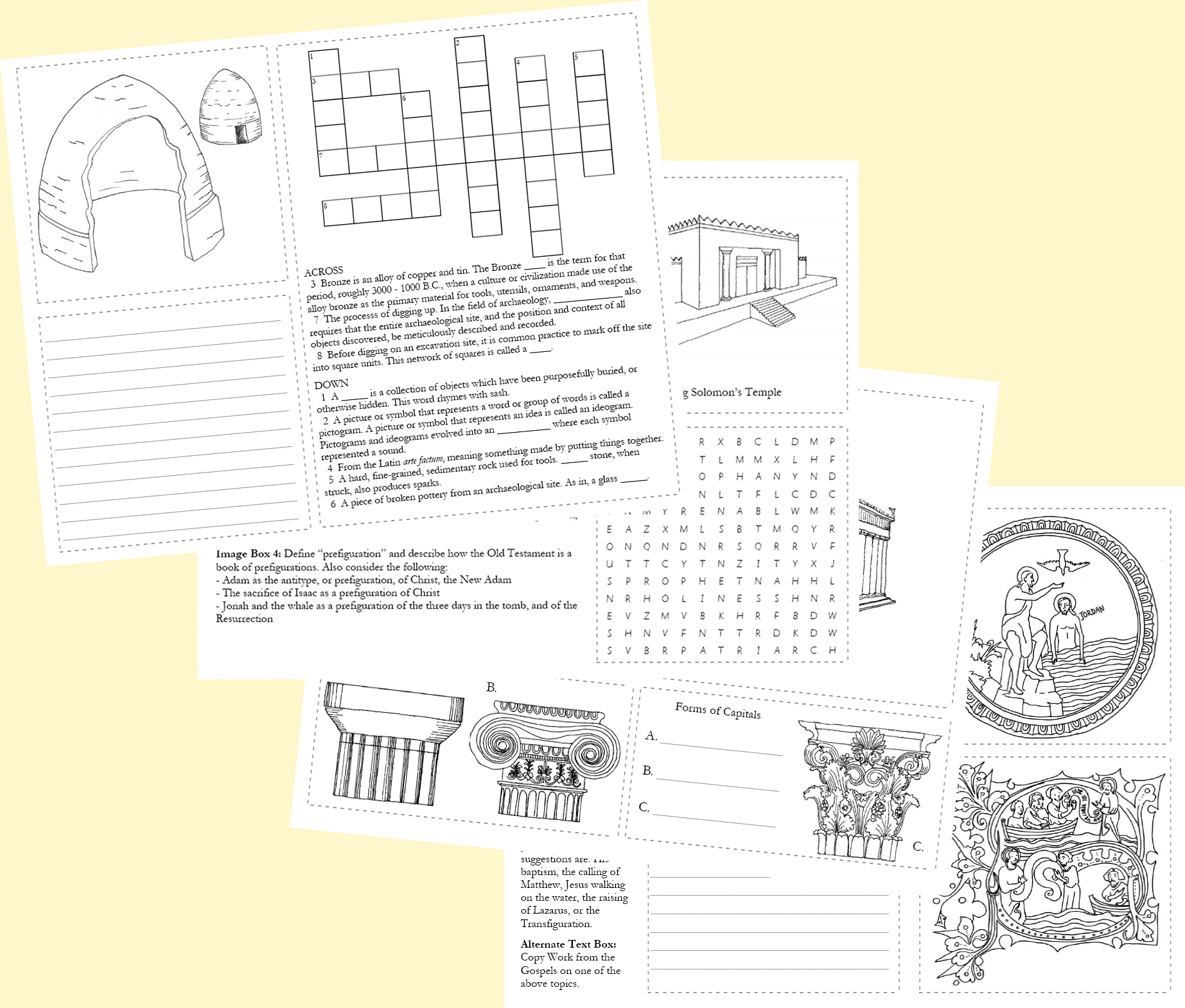
Examples of Ancient History Portfolio Teacher’s Guide Pages.
Modern History Portfolio Junior
The Modern History Portfolio Junior is a modified version of the Classic Portfolio. The Juniors contain the same chapter titles, in the same order as the Classic volumes, to allow older and younger children to work side by side. The Junior, however, has fewer pages and therefore requires much less writing. It has been designed for children in the following groups: the child who is 8 – 10 years old, capable of giving and writing short narrations; the child who is ready for copy work, but not yet ready for narrations; and the child who is ready for school work, but only very basic writing activities. Notebooking activities focus on observation, comprehension, penmanship, copy work, memory work, beginning writing skills, and plenty of games and puzzles for reinforcement and review. The Junior comes bound with its own junior version of the Teacher’s Guide, a bibliography, plus an end-of-the-year Bingo game set. Each Portfolio is designed for use by an individual and will become a unique record of the student’s journey through history… a keepsake and a “book to treasure!”
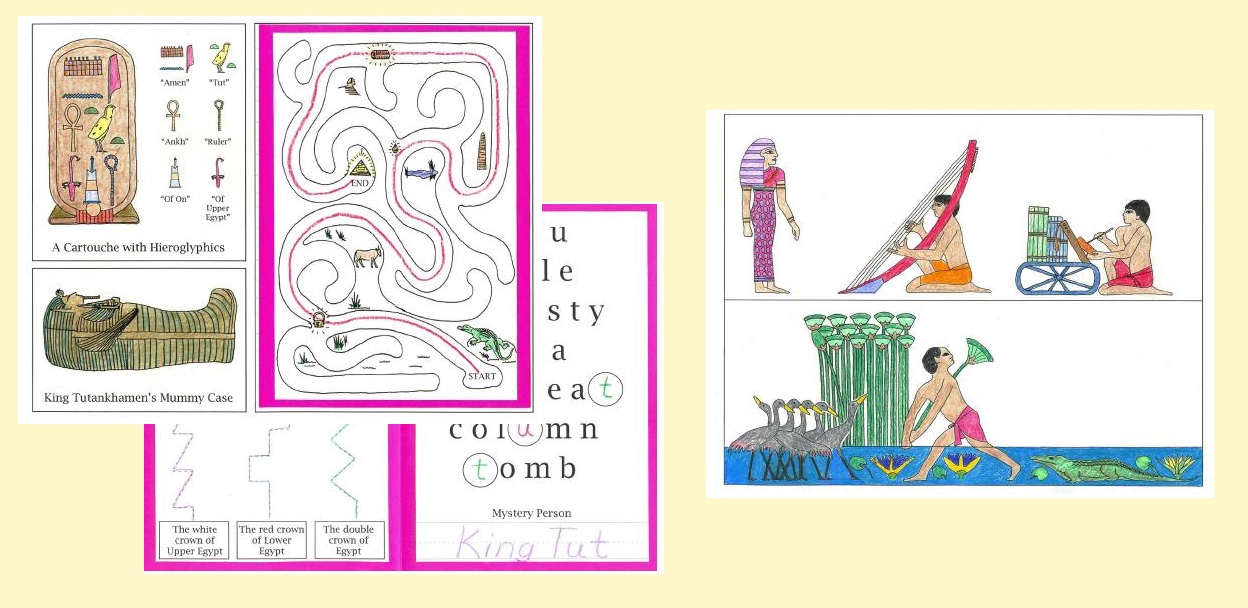
Examples of Ancient History Portfolio Junior Pages, completed by a 5-6 year old.
BIBLIOGRAPHY – RECOMMENDED SOURCES:
The History Portfolio books allow families to choose their own sources for research.Suggestions for treasured, read-aloud-time, include popular narrative history stories such as Story of the World and Mystery of History, plus any number of living books and non-fiction sources purchased online, or borrowed from your local library.
Click HERE to see the handy list of recommended sources, with Amazon links, for each chapter in the Modern History Portfolio Classic and Modern History Portfolio Junior.
METHOD AND PHILOSOPHY OF APPROACH:
Notebooking: Workbook pages present a lot of information up front, but require very little engagement from the student. The History Portfolios reverse this scenario. The Portfolios gently lead the student by providing the spine and posing questions which require research and writing in order to answer. In this scenario it is the student who puts in the greatest effort. This is when learning happens.
Give a man a fish and you feed him for a day; teach a man to fish and you feed him for a lifetime.
Workbook pages become disarrayed and dispersed, devalued and lost, crumpled between books on the school shelf, or carried off in the recycling bin. The History Portfolios reverse this scenario as well. The notebooking pages of the Portfolios begin as empty frames but are transformed through authentic research, writing, and illustrating. They become a treasured, cohesive, array of knowledge.
The Inquiry-Based Approach: In order to complete a Portfolio, your student will become involved with age appropriate research and writing activities. Throughout the course of study, expect them to be engaged in the following process, with the immediate goal of “telling the story”. 1. Referring to the Portfolio’s Table of Contents and the Teacher’s Guide for the detailed spine.2. Researching the topics indicated, collecting information, and discussing. 3. Listening to stories read-aloud and conducting age appropriate additional reading.4. Writing reports and descriptions on the topics indicated. This involves note-taking, outlining, defining topics, and writing in paragraph form. 5. Illustrating reports using images and diagrams cut from the Teacher’s Guide or acquired through additional research. 6. Assembling the notebooking pages of the Portfolio.This process of inquiry, involving researching, reading, writing, and illustrating, will be repeated for every topic, and always kept fresh and new by the nature (unique characteristics) of each topic. It is through frequent use that the elegance of the process of inquiry will be revealed, demystified, and internalized. Working through the four-year history cycle, incrementally gaining independence each year, will ensure that your student acquires proficiency and confidence. Owning this process of inquiry equips the student with the tools required to approach and master any discipline, and paves the way for independent, self-directed, learning. Be the journalist. Tell the Story!




